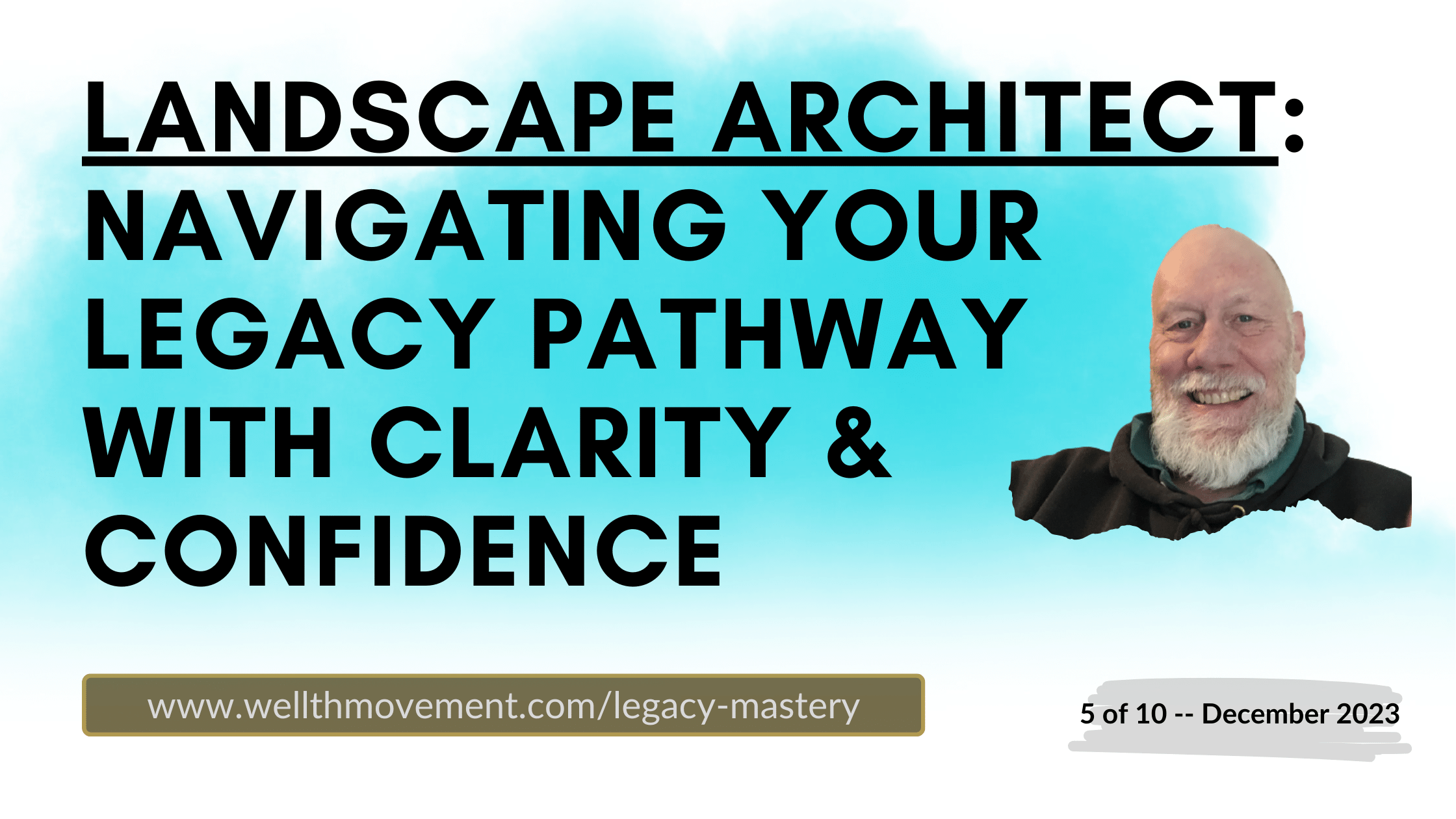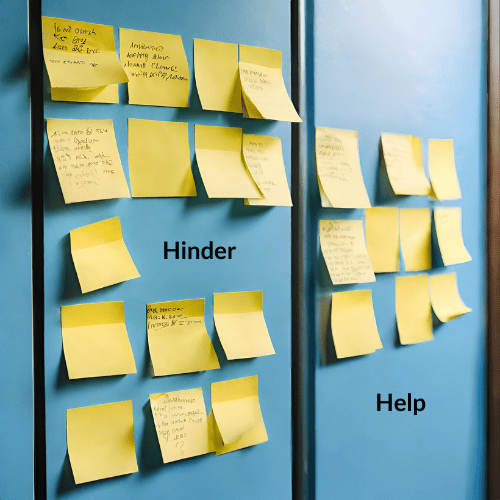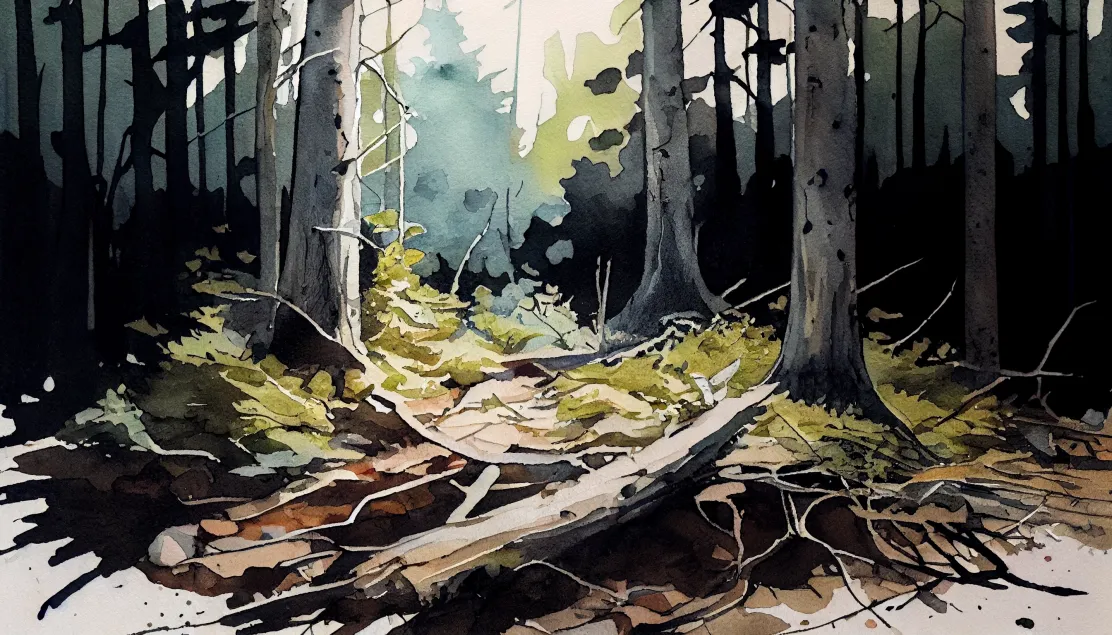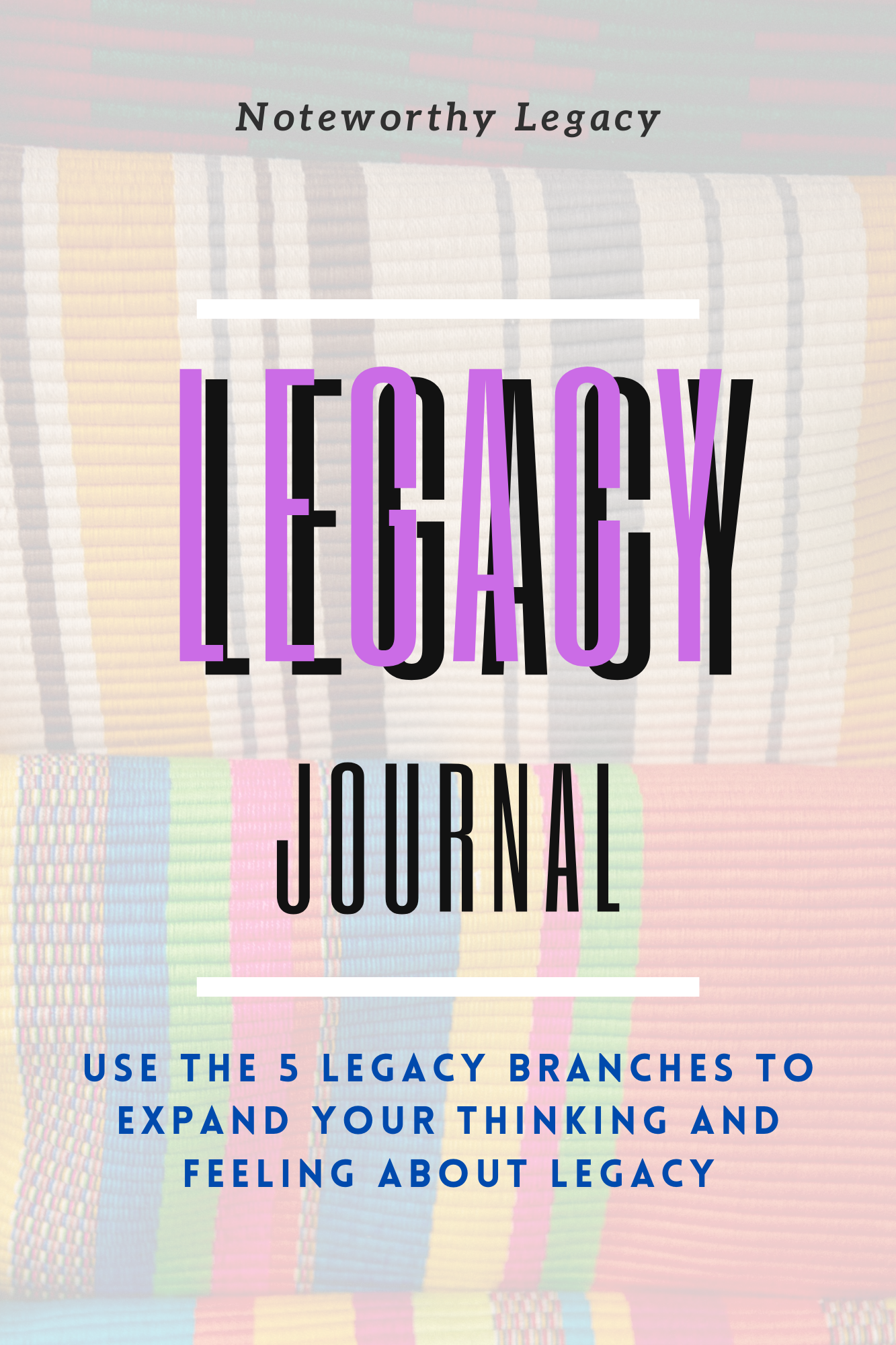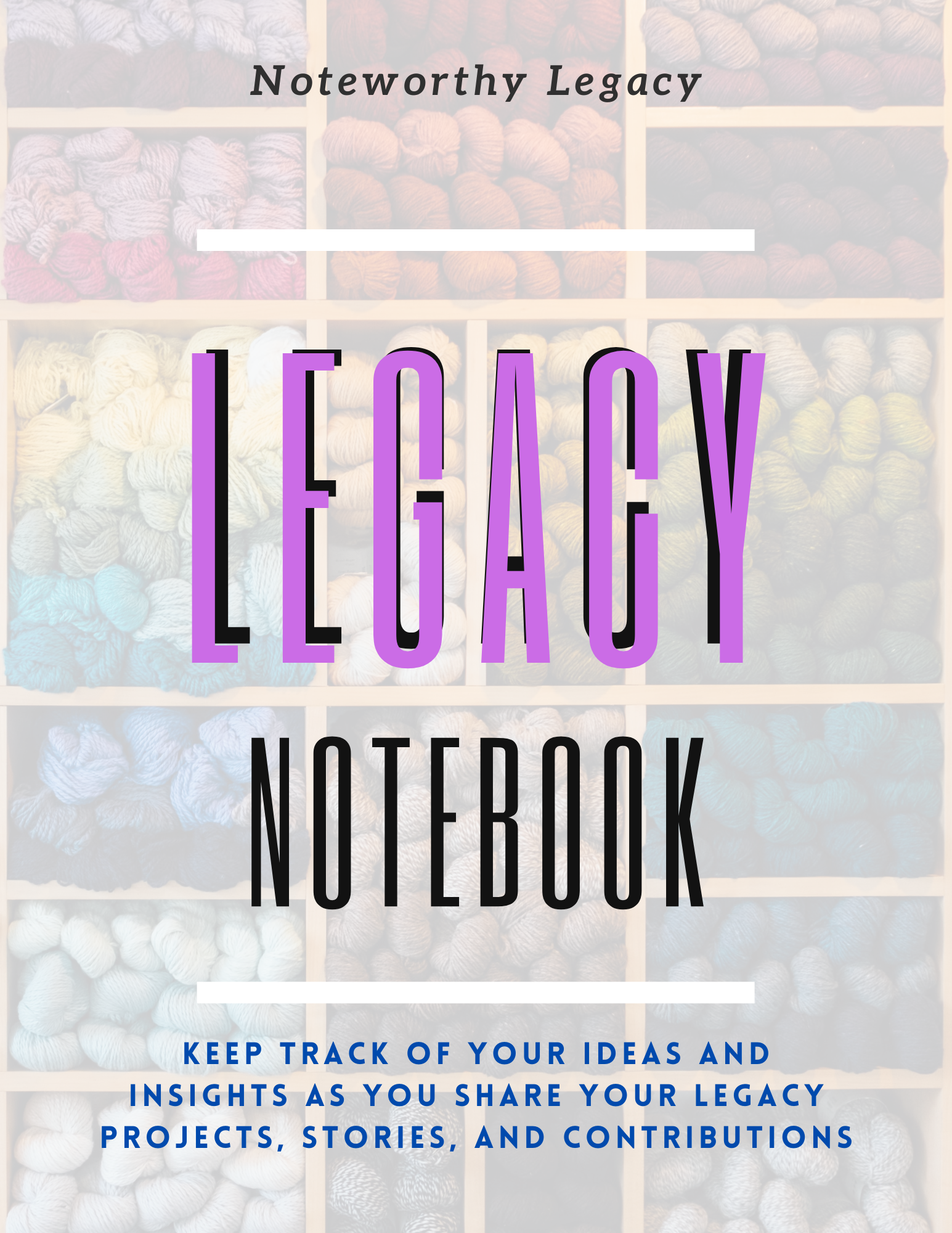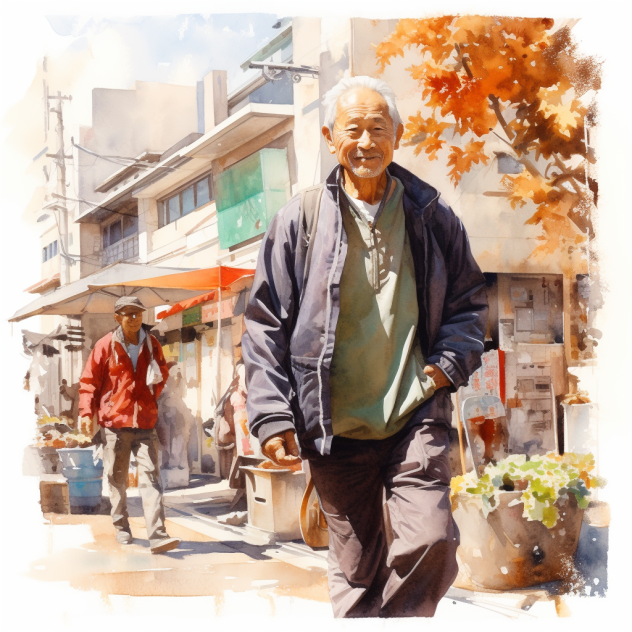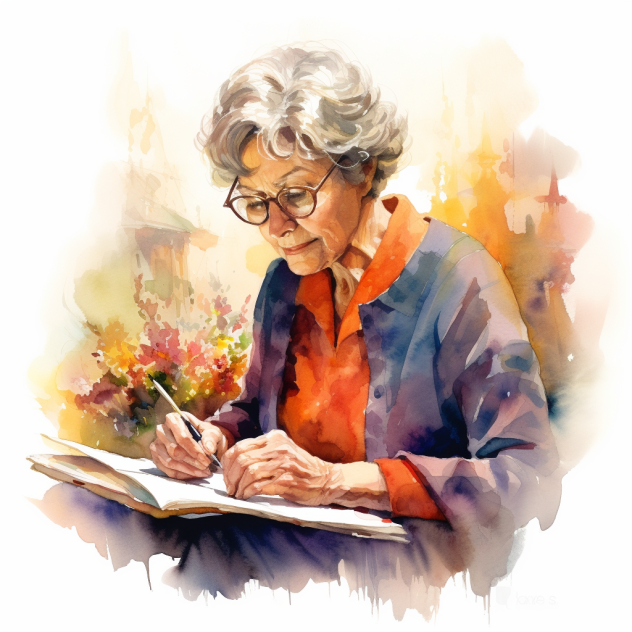Audience: Those shaping and sharing (while living and leaving) a legacy project (with its stories & contributions) for the world and/or with the planet like… Agers - SoloAgers - Empty Nesters - Continuing Educators - Professionals - Retired Creators - Olders as Elders - Grandparents - Intergenerational Contributors - and YOU!
Walking In
Walking your legacy pathway, crafting a meaningful living legacy project requires an exacting, often studious approach to moving project development to project delivery using project management.
As a Landscape Architect, it’s important to delve into
- developing a project management plan (to detail your project map)
- establishing a realistic timeline for project implementation (to assign accountability for//responsibility to)
Doing so serves as the backbone of your legacy development to delivery journey, ensuring translation of your ideas and insights into actionable steps with well-defined outcomes. As a result, you gain clarity and confidence.
Outlining Your Project Delivery Results
There are two important activities to outline project delivery requirements. The first activity sets up the second activity that guides the generation of the project management plan.
First, identify what Hinders and Helps your expected project delivery.
Ask, “What hinders and helps YOU to deliver your legacy project?”
This question is a “blue sky” (some use brainstorm) activity.
Whatever the answers, place one answer per recipe card or sticky note (doing so supports movement of the cards later).
The more insights you record, the better the plan later. Here is not the time to hold back. And the “YOU” means you by yourself and/or invite others into the activity.
As a process example--reference is made to a large legacy project.
Second, once you’ve written your thoughts by recipe cards, and placed them under the Hinder column and Help column
- a) gather cards with connected thoughts under each column to form "piles" (Do not force fit cards together. Do not exceed 9 piles of cards–suggestion only)
- b) name each “pile of collected cards” - give it a theme name that umbrellas the pile (like "External Communication" "Management of the Project Operations")
- c) with the Help pile: What can you do (what action can you take) to maintain//strengthen each of the theme piles? Record each response on a new card and place these cards with the pile... If you believe these themed piles Help you, in what ways do you see that happening?
- d) with the Hinder pile: What can you do (what action can you take) to impact//reframe each of the theme piles? Record each response on a new card and place these cards with the pile... If you believe these themed piles Hinder you, in what ways can you reduce their influence?
- e) rewrite the Help theme names and pile responses as action-based//outcome suggestion (action-outcome) statements with 3 less than 9 words (Manage the internal communication plan for contributors)
- f) rewrite the Hinder theme names as action-based//outcome suggestion (action-outcome) statements with 3 less than 9 words (Use ethical decision making for project issues involving volunteers)
Use the action-outcome statements (e and f) with underlying details (c and d) to write the Project Management Plan to support Project Development-Delivery-Determination. [Determination is about the process to confirm the correct outcome (success).]
The action-outcome statements you develop will link to the categories and subcategories found in the Broad Activity Categories for Project Management listed in the column below.
You can book a quick call if you want to explore this process: Book here…
Use the Contact Form to ask a question: Here..
Reference this article in your request.
Starting with this activity, as a Landscape Architect, you lay open the landscape of hindrances and helps that affect your legacy project. Doing the activity with project supporters and contributors (and recipients) is a bonus!
Tapping into the experience of other Landscape Architects, they will share the common struggles such as poor project management planning, unclear project timelines, and the lack of coordination and structure. By valuing the hinder and help activity, you can lay path stones for creating a robust project management plan in your words, on your terms that counter the struggles.
Developing a Detailed Project Management Plan
The core currency for this step is project planning including (and not limited to):
- understand the components of an effective plan
- define goals//outcomes
- outline tasks
- allocate resources
- establish metrics for achievement
- list measures for accomplishments
Because Legacy Projects vary by size - outcome - timelines - location - and more, the project (development to delivery) management plan will vary in scope and presentation.
Whether you are looking at writing a book or construct a water sanitation project in another country, some form of project management plan is required for success. This article leans into a big project like the water sanitation project in another country.
Developing the Timeline for Project Implementation
Within the project management plan, developing a realistic timeline for project implementation is required. You are matching accountability for and responsibility to assignments with your clear understanding of the chronological sequence of tasks.
Consider: It’s not time management. Its action management with time assignment. You align the action-outcome with the time commitment.
Addressing Common Struggles
Earlier, I mentioned three common struggles. To be sure you understand the way forward to avoid–limit these struggles, consider:
Poor Project Management Planning:
- create a wholistic [comprehensive, if not flexible] plan
- emphasize the importance of clear goals//outcomes, well-defined tasks, and efficient resource allocation [in the form of action-outcome statements]
- consult a project management template you can edit for your use
- consider a mentor and/or ask for support (volunteer or paid)
Unclear Project Timeline:
- list practical insights into the chronological sequence of tasks - achievement for you and accomplishment with others
- consider scenarios should the timelines require edits (add, alter, delete) - what happens?
- reframe time management as action management
Lack of Coordination and Structure:
- write tasks for the action-outcome statements with time assignment
- maintain the Help structure and relationships within your project management plan
- foster an environment conducive to achievement for you and accomplishment with others
Broad Activity Categories for
Project Management
* Skill Tactician (Project Development)
* Landscape Architect
Confirm from Project Design
Define the project's purpose and objectives.
Identify stakeholders and their roles.
Develop a project movefesto.
Not in order:
* Planning:
Create a comprehensive project plan outlining tasks and timelines.
Define project scope, budget, and resources.
Establish risk management and mitigation strategies.
Execution:
Implement the project plan and carry out the defined activities.
Coordinate people and resources.
Address and resolve issues in real-time.
Monitoring and Controlling:
Track project progress against the plan.
Monitor and control project risks.
Ensure quality standards are met.
Closing:
Confirm that all project deliverables are complete.
Obtain formal acceptance from stakeholders.
Evaluate project success and lessons learned.
Communication:
Establish a communication plan.
Regularly update stakeholders on progress.
Facilitate collaboration and integration among group/team members.
Risk Management:
Identify potential risks.
Assess the impact and probability of each risk.
Develop strategies to mitigate or respond to risks.
* Resource Management:
Allocate resources effectively.
Monitor resource utilization.
Anticipate and address resource constraints.
Quality Management:
Define quality standards.
Implement quality control measures.
Ensure that deliverables meet predefined quality criteria.
Change/Transition Management:
Establish a transition process for handling changes.
Assess the impact of change/transition on the project.
Communicate updates to relevant stakeholders.
* Group/Team Collaboration:
Ensure knowledge and skill development by accountability profile.
Foster a collaborative group/team environment.
Address conflicts using feed-forward techniques.
Bonus Consideration_Update and Refine Your Plan and Timeline Regularly:
- acknowledge the dynamic nature of your project
- complete regular updates and refinements to your plan and timeline
- remain adeptive (adoptive and adaptive) to shifting circumstances, increasing the likelihood of success.
Moving Forward:
The ultimate outcome for a Landscape Architect is to create a [wholistic–detailed] project management plan including stepwise action-outcomes with a realistic timeline framed by clarity while nurturing confidence.
From this perspective, you translate your legacy aspirations into a pathmap–pathplan–pathway to live from the legacy you intend to leave.
For every legacy project there is a project management plan!
Starting the interview process for a cohort Legacy Mastery course starting in January 2024.
9 8 Seats available at time of posting this article!
Personal Reflection:
In a world often characterized by laborious planning, the ignorance of key project elements, and unclear project framing, through the Legacy Mastery Program (Course and Mentoring) you become the master of your legacy and legacy project.
- You do not need project management experience - you have some of it, we can fill in the blanks!
- You do not need marketing experience - yet you experience it everyday!
- You do not need considerable financial resources - could be helpful.
Yet, most projects are about time and effort!
What you require–is being ready, able, and willing
- to clarify your legacy project pathway with confidence and commitment
- to connect and complete a “section//element of your selected project (beta test)”
- to confirm a green light to move forward with the whole project
Please
share - TU!
_/|_ Visit the store - there are books for sale like:
Visit the Store to access
support resources:
_/|_ Click to access the Wellth Blog.
_/|_ Watch YouTube videos here:
WellthLearningTV - main channel for all things soloaging and legacy
Awarests - main channel for all things nature awareness and trees & forests
Mentoring Community - main channel for mentoring practices
How We Stay Connected
If you want to receive updates - no more than 5 a month, that's one a week
- add your first name and email to the form below (as indicated by the red asterisks).
AND, by filling in all or portions of the form --- OPTIONAL
--> "you help us to help you" with what we can offer to move you forward.
For example:
- On the New Moon and Full Moon dates, you'll receive a summary of the blog posts, video links, and image content (so you can binge watch and read!) = 2X per month
- Learn about upcoming special deals and first notice alerts with discounts! = 1X per month
- Receive updates on times we meet online to answer questions you send us! = 1-2X per month
Along the journey as you weave your tapestry, paint your canvas, write in your journal
understanding StoryScope and Legacy are important concepts and practices.
A quick reminder of both follow:
Understanding the StoryScope
Our lives are stories waiting to be told, narratives that unfold with each passing day.
The metaphor of "StoryScope" invites us to view this narrative through different lenses. Just as telescopes reveal the vastness of the universe, microscopes uncover the intricacies of the microscopic world, stethoscopes listen to our vital sounds of living, our StoryScope allows us to explore and find the full spectrum of our daily existence.
Our daily lives resemble a kaleidoscope, with each decision, action, and interaction contributing to the ever-shifting, meaningful pattern.
As SoloAgers and seasoned professionals, you have a unique perspective on life's twists and turns. Your legacy is not only a reflection of your past-present but a blueprint for the future-present.
Legacy: The Useful Whats
Legacy is often associated with material wealth, but it extends far beyond possessions. Legacy comprises the "useful whats" we leave behind, including our time, effort, and money. These elements are the building blocks and seedbeds of our legacy, and how we allocate, plant them shapes the stories we share.
For Agers, especially SoloAgers (and Olders to Elders), who have accumulated a wealth-wellth of experiences and knowledge, legacy is about passing on wisdom and lessons. Your is about preserving your story as it is about empowering others to write their chapters more skillfully. As professionals and educators, your legacy resides in the work you shared, the values you instilled, and the innovations you sparked.
Guide to Programming through WELLth Movement
for Aging, especially SoloAging: Professionals and ParaProfessionals
Below, if the numbered title is bold blue, it is ACTIVE!
Here you can click access more information and the investment buttons.
The non-Active buttons are coming on line before the end of 2023!
If you have a Question and/or Comment
about one or more of the Programs and Projects
in the Legacy Agora EcoSystem and/or the PathMap,
please use this form. TU!
PS: The System and Maps are subject to Edits.
Transparency: AI-assisted based on priming and prompting! Considerable editing followed.
Please
share - TU!
It's all about sharing the legacy you intend to live (and leave).
For more in-depth insights about:
INVITE Soloaging Olders to be Elders
who discover, shape, and share the legacy
they intend to live and leave Start here
Certification as a mentor Start here
To contact us use our Contact Page
Add your comments - update the insights in your words
- share funnies for all of us to read below the blog list!
July 10 2025 FULL Moon Edition of the Solace Grove Magazine 11
Saturday Legacy Stories from Solace Grove #9AWhere Mountains Meet Community, and Every
Saturday Legacy Stories from Solace Grove #10 Where Mountains Meet Community, and Every
Saturday Legacy Stories from Solace Grove #9AWhere Mountains Meet Community, and Every
Saturday Legacy Stories from Solace Grove #9Where Mountains Meet Community, and Every
June 25, 2025 New Moon Edition of the Solace Grove Magazine 8Where
